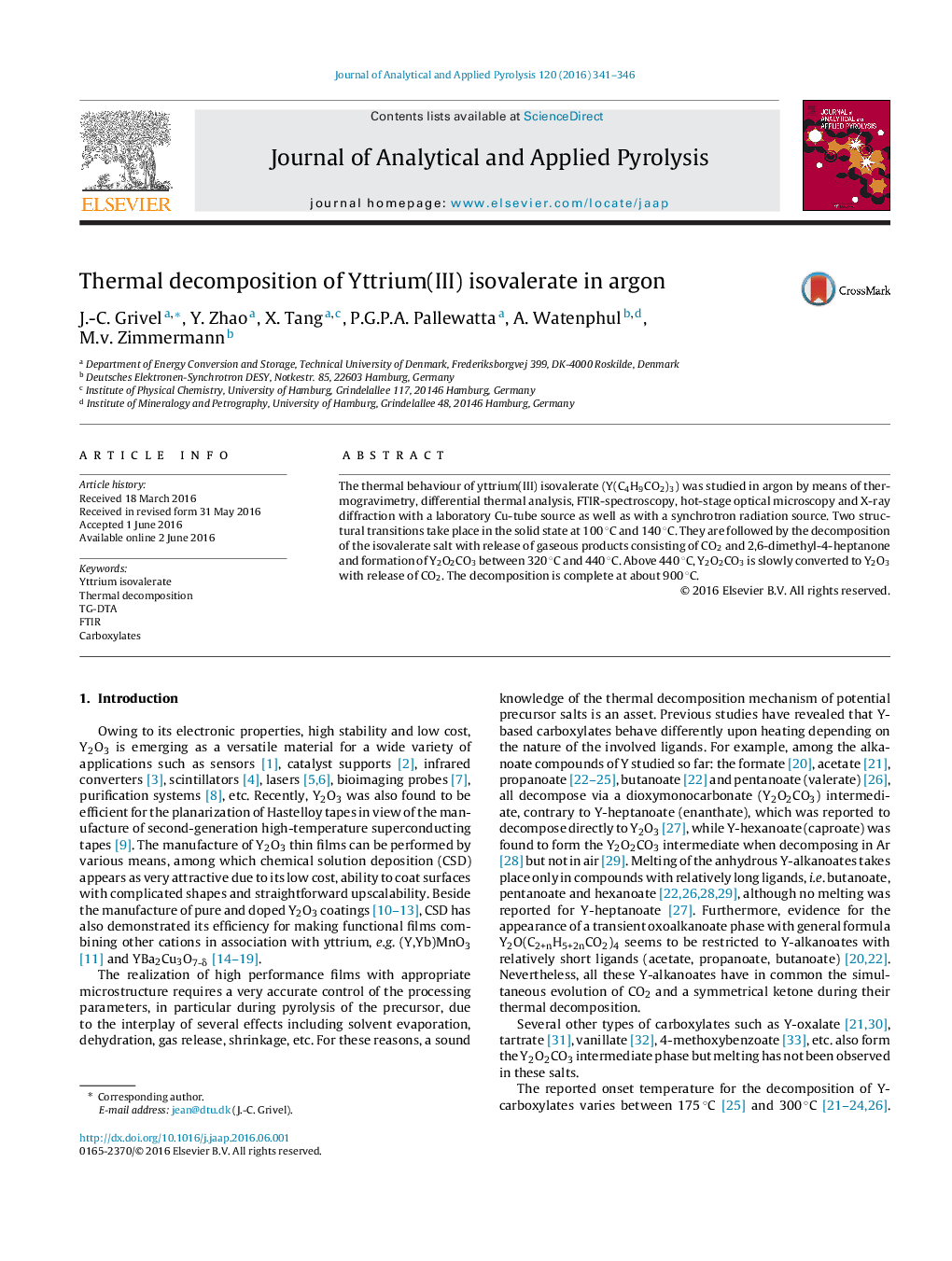| Article ID | Journal | Published Year | Pages | File Type |
|---|---|---|---|---|
| 1196560 | Journal of Analytical and Applied Pyrolysis | 2016 | 6 Pages |
•Yttrium(III) isovalerate Y(C4H9CO2)3 was prepared and characterized.•Y(C4H9CO2)3 does not melt between 40 °C and 110 °C prior to decomposition.•Decomposition occurs at a 20 °C higher temperature than for Yttrium(III) valerate.•CO2 and C9H18 (2,6-dimethyl-4-heptanone) are released during the decomposition.•The decomposition of Y(C4H9CO2)3 to Y2O3 proceeds through Y2O2CO3.
The thermal behaviour of yttrium(III) isovalerate (Y(C4H9CO2)3) was studied in argon by means of thermogravimetry, differential thermal analysis, FTIR-spectroscopy, hot-stage optical microscopy and X-ray diffraction with a laboratory Cu-tube source as well as with a synchrotron radiation source. Two structural transitions take place in the solid state at 100 °C and 140 °C. They are followed by the decomposition of the isovalerate salt with release of gaseous products consisting of CO2 and 2,6-dimethyl-4-heptanone and formation of Y2O2CO3 between 320 °C and 440 °C. Above 440 °C, Y2O2CO3 is slowly converted to Y2O3 with release of CO2. The decomposition is complete at about 900 °C.
